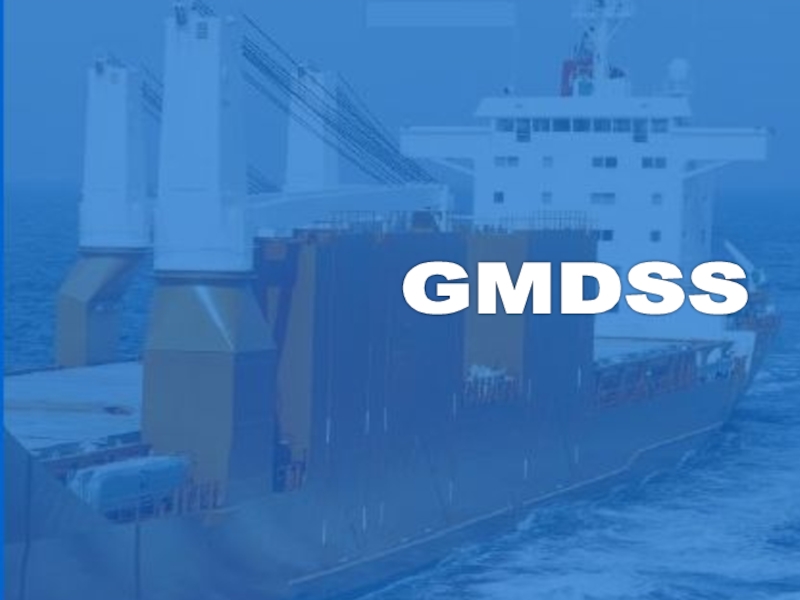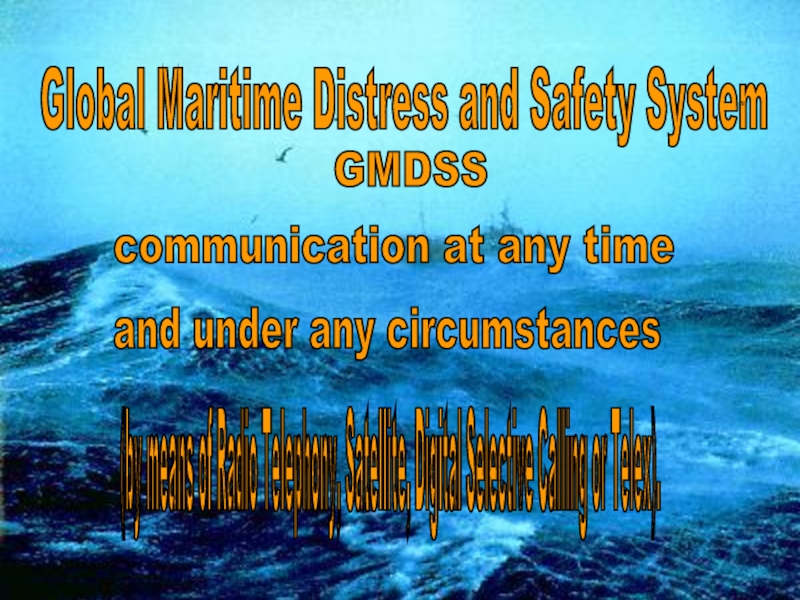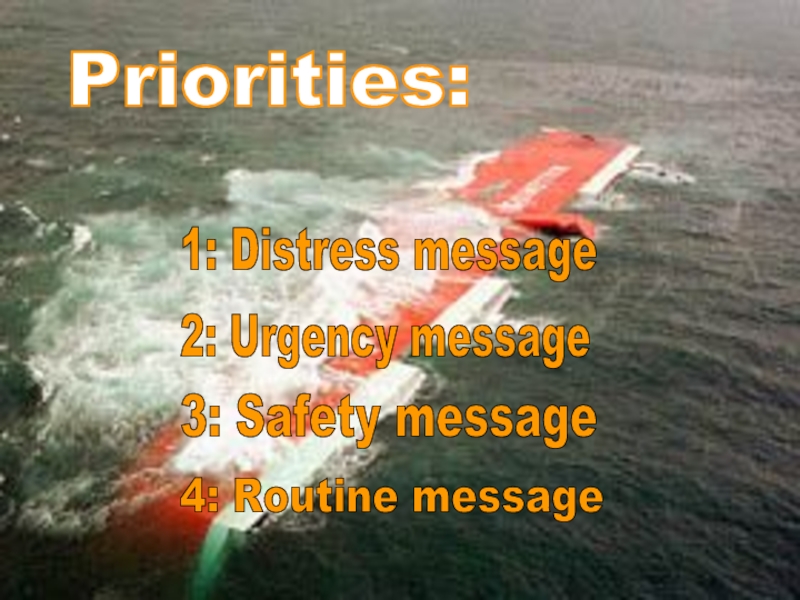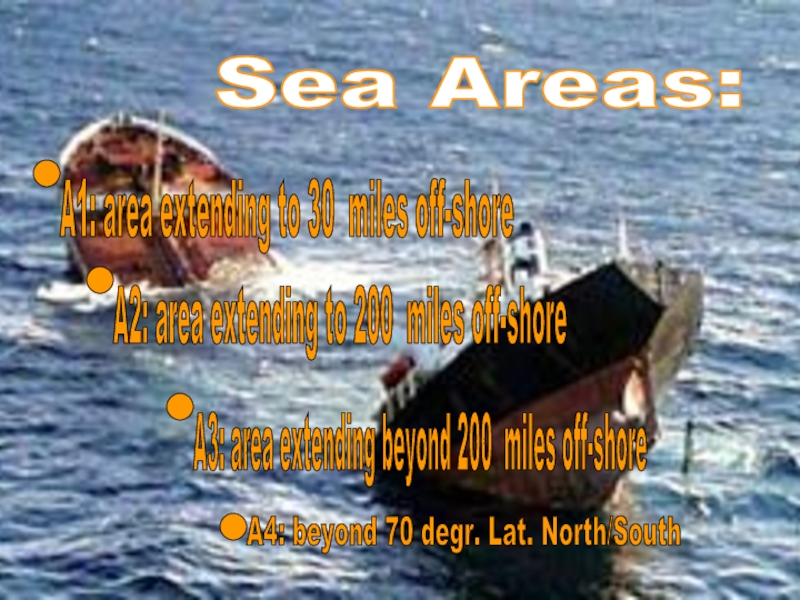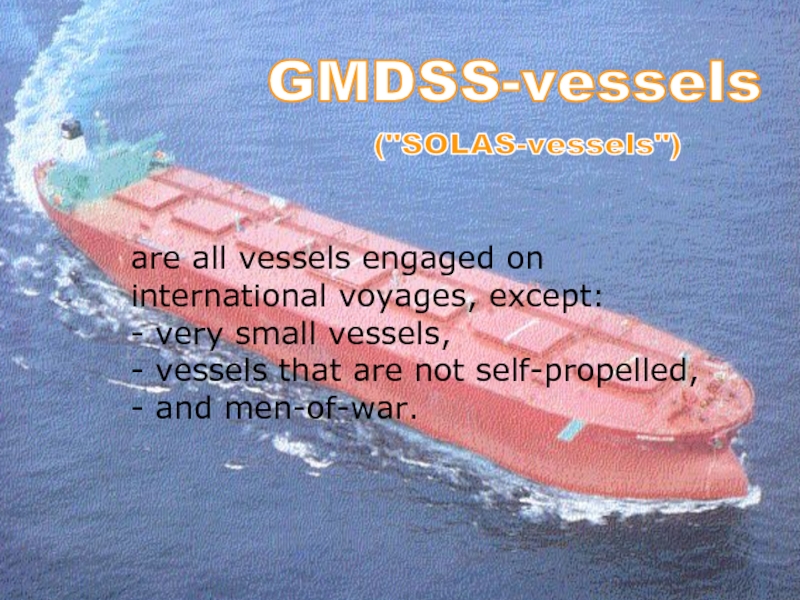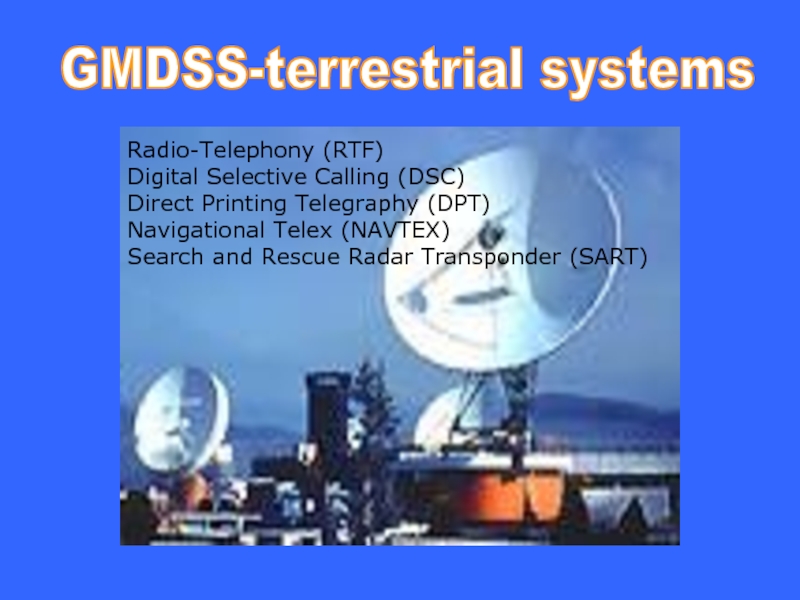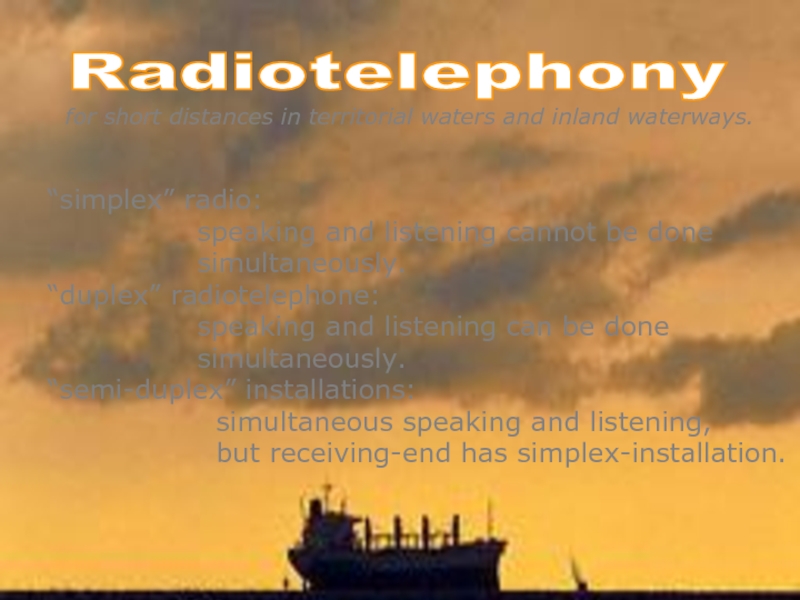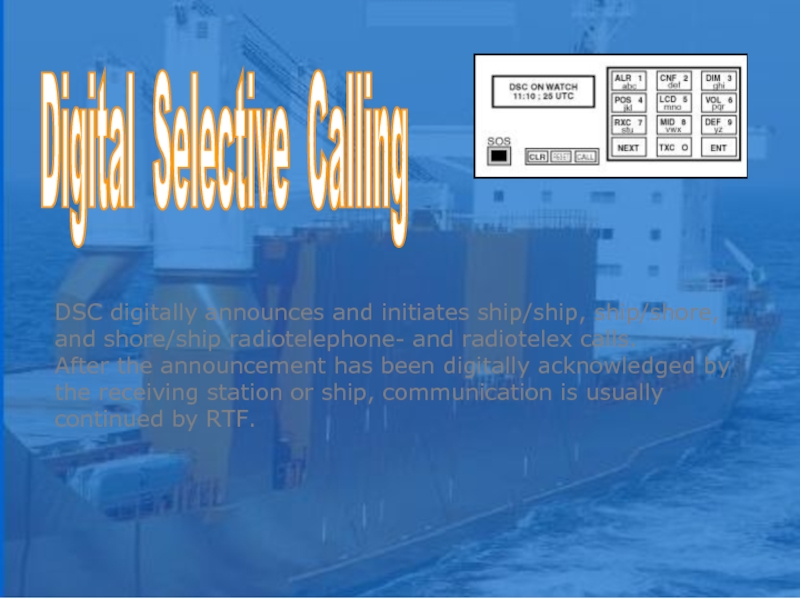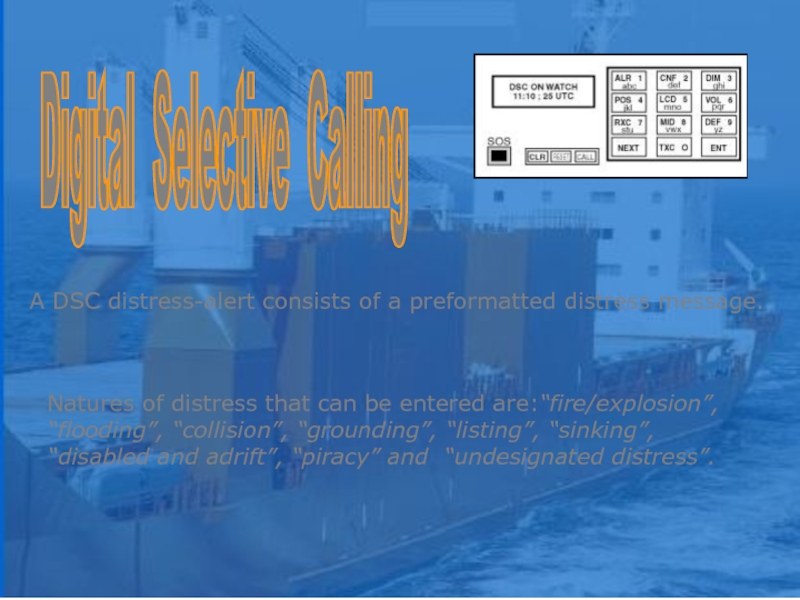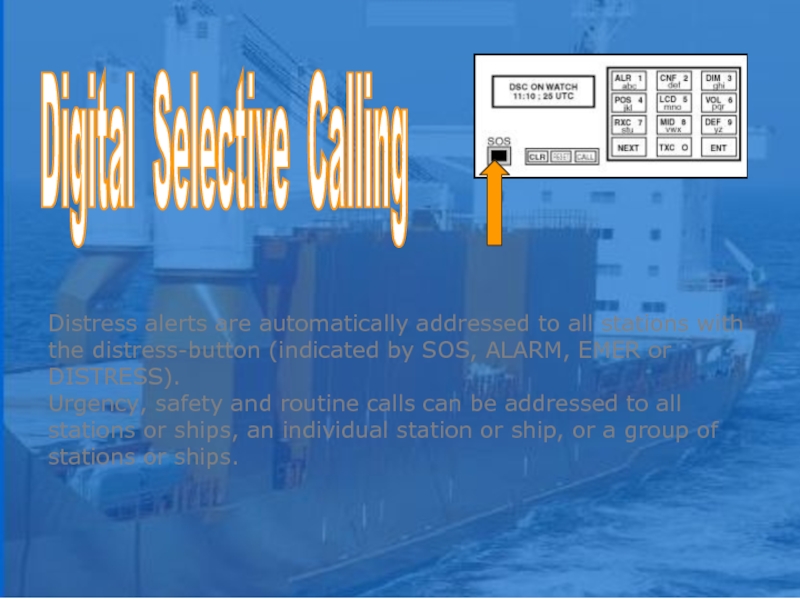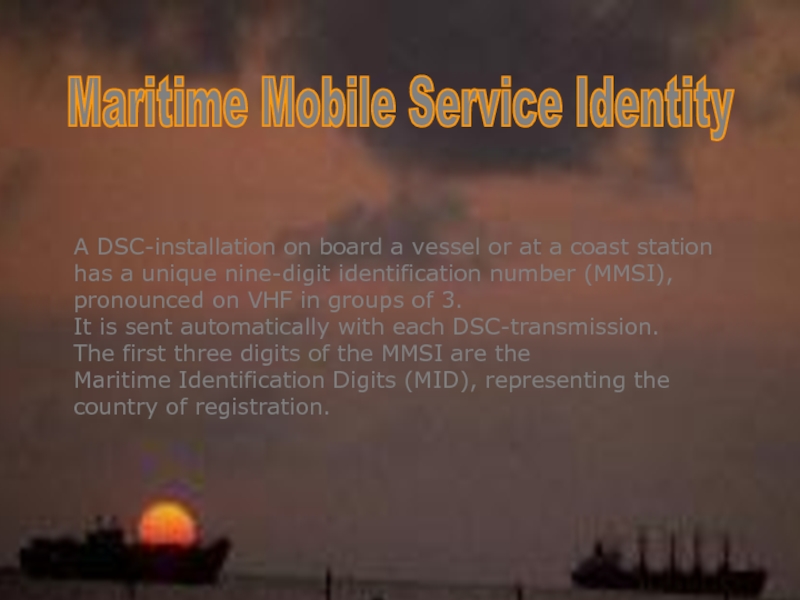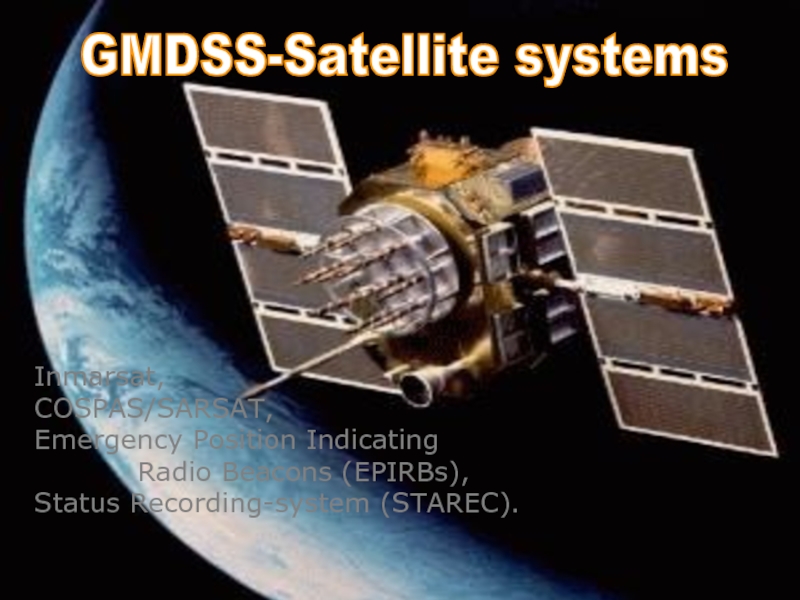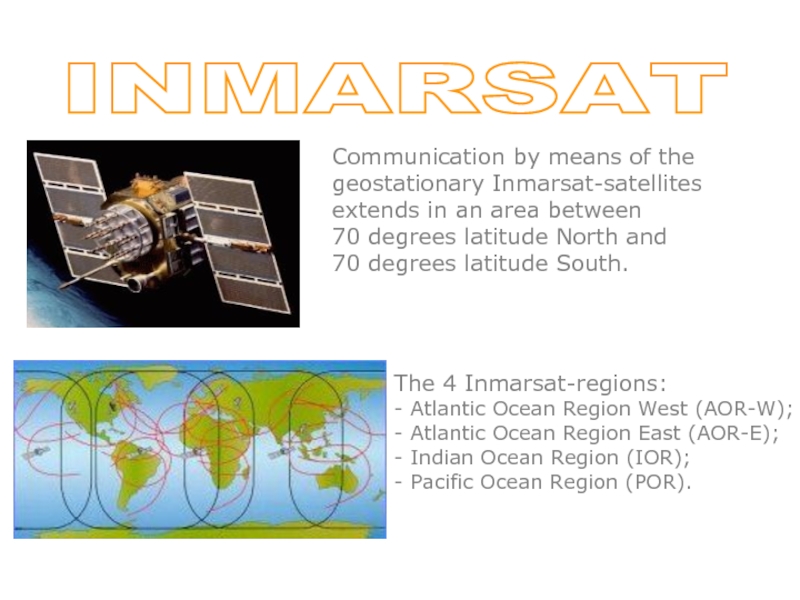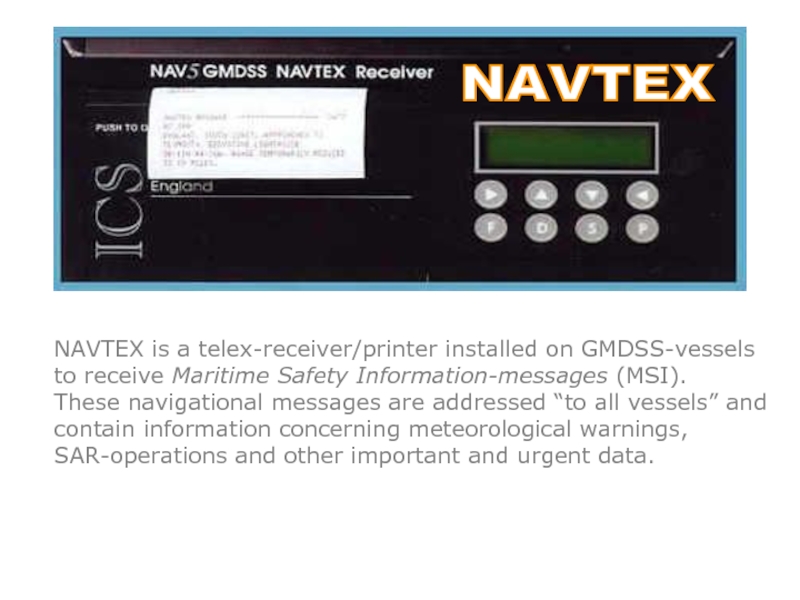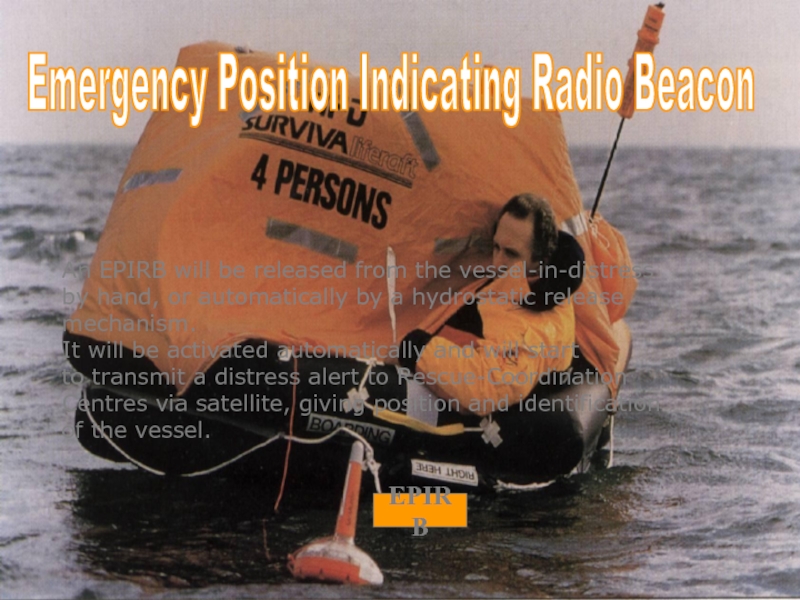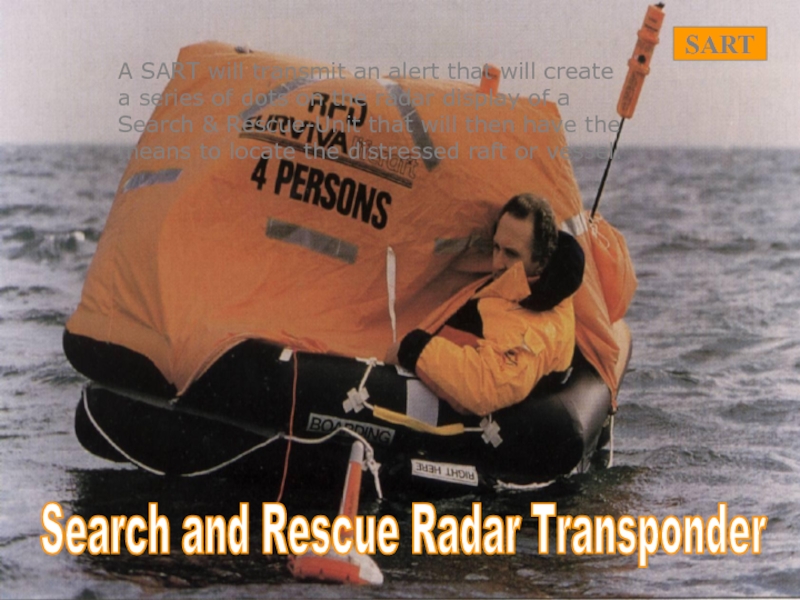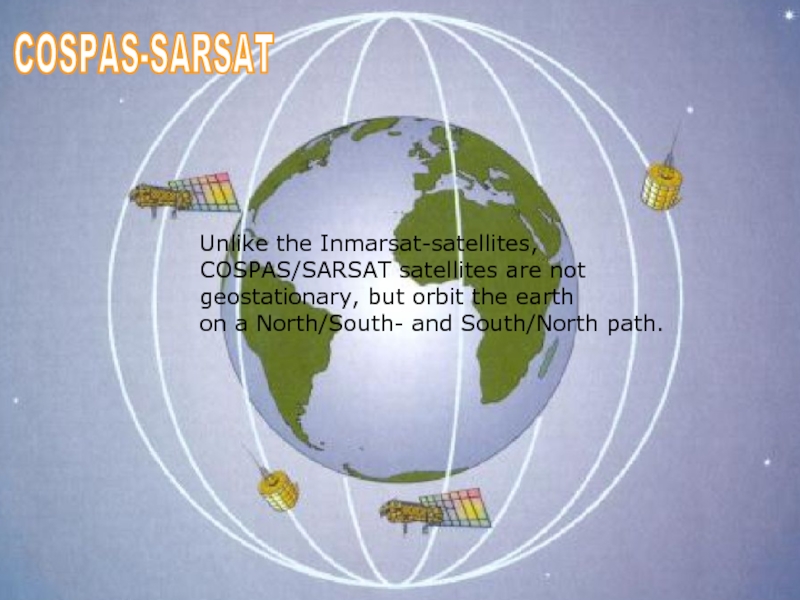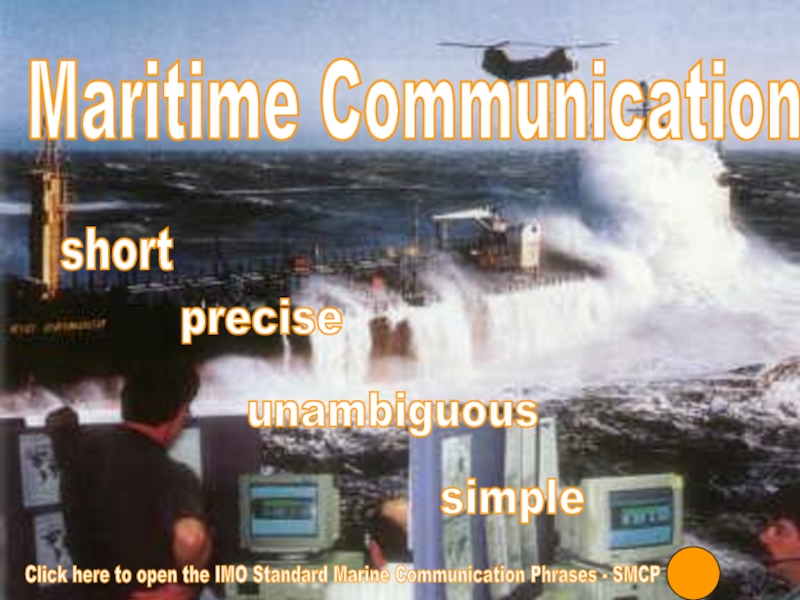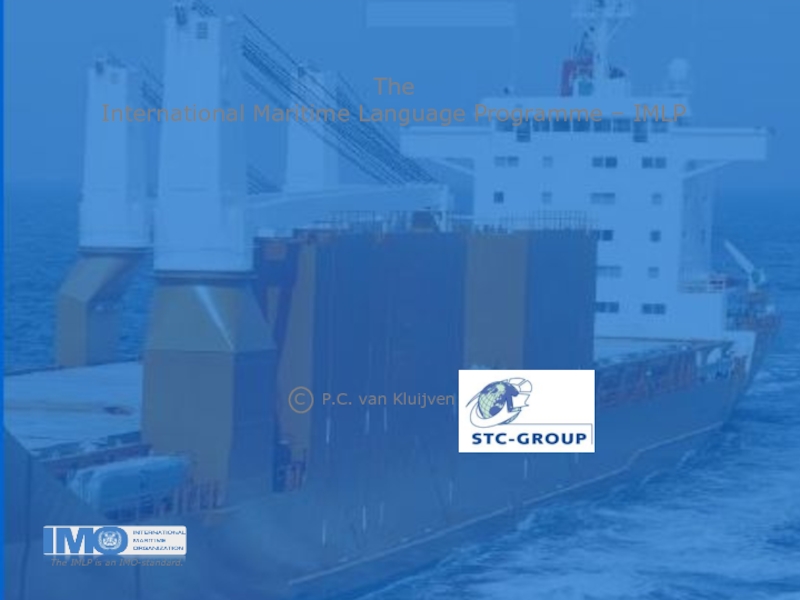- Главная
- Разное
- Дизайн
- Бизнес и предпринимательство
- Аналитика
- Образование
- Развлечения
- Красота и здоровье
- Финансы
- Государство
- Путешествия
- Спорт
- Недвижимость
- Армия
- Графика
- Культурология
- Еда и кулинария
- Лингвистика
- Английский язык
- Астрономия
- Алгебра
- Биология
- География
- Детские презентации
- Информатика
- История
- Литература
- Маркетинг
- Математика
- Медицина
- Менеджмент
- Музыка
- МХК
- Немецкий язык
- ОБЖ
- Обществознание
- Окружающий мир
- Педагогика
- Русский язык
- Технология
- Физика
- Философия
- Химия
- Шаблоны, картинки для презентаций
- Экология
- Экономика
- Юриспруденция
Maritime Communication GMDSS презентация
Содержание
- 1. Maritime Communication GMDSS
- 2. GMDSS communication at any time
- 3. Priorities: 3: Safety message 2:
- 4. Sea Areas: A1: area extending to
- 5. ("SOLAS-vessels") are all vessels engaged on
- 6. GMDSS-terrestrial systems Radio-Telephony (RTF) Digital
- 7. Radiotelephony “simplex” radio:
- 8. DSC digitally announces and initiates ship/ship, ship/shore,
- 9. A DSC distress-alert consists of a preformatted
- 10. Distress alerts are automatically addressed to all
- 11. Maritime Mobile Service Identity A DSC-installation
- 12. GMDSS-Satellite systems Inmarsat, COSPAS/SARSAT,
- 13. INMARSAT Communication by means of the
- 14. NAVTEX is a telex-receiver/printer installed on GMDSS-vessels
- 15. Emergency Position Indicating Radio Beacon An
- 16. Search and Rescue Radar Transponder A
- 17. COSPAS-SARSAT Unlike the Inmarsat-satellites, COSPAS/SARSAT
- 18. s Maritime Communication short precise
Слайд 2GMDSS
communication at any time
and under any circumstances
Global Maritime
s
(by means of Radio Telephony, Satellite, Digital Selective Calling or Telex).
Слайд 4Sea Areas:
A1: area extending to 30 miles off-shore
A2: area
A3: area extending beyond 200 miles off-shore
A4: beyond 70 degr. Lat. North/South
Слайд 5("SOLAS-vessels")
are all vessels engaged on
international voyages, except:
- very
- vessels that are not self-propelled,
- and men-of-war.
GMDSS-vessels
Слайд 6GMDSS-terrestrial systems
Radio-Telephony (RTF)
Digital Selective Calling (DSC)
Direct Printing Telegraphy (DPT)
Navigational
Search and Rescue Radar Transponder (SART)
Слайд 7Radiotelephony
“simplex” radio:
simultaneously.
“duplex” radiotelephone:
speaking and listening can be done
simultaneously.
“semi-duplex” installations:
simultaneous speaking and listening,
but receiving-end has simplex-installation.
for short distances in territorial waters and inland waterways.
Слайд 8DSC digitally announces and initiates ship/ship, ship/shore, and shore/ship radiotelephone- and
After the announcement has been digitally acknowledged by the receiving station or ship, communication is usually continued by RTF.
Digital Selective Calling
Слайд 9A DSC distress-alert consists of a preformatted distress message.
Natures of distress
“disabled and adrift”, “piracy” and “undesignated distress”.
Digital Selective Calling
Слайд 10Distress alerts are automatically addressed to all stations with the distress-button
Urgency, safety and routine calls can be addressed to all stations or ships, an individual station or ship, or a group of stations or ships.
Digital Selective Calling
Слайд 11Maritime Mobile Service Identity
A DSC-installation on board a vessel or
It is sent automatically with each DSC-transmission.
The first three digits of the MMSI are the
Maritime Identification Digits (MID), representing the country of registration.
Слайд 12GMDSS-Satellite systems
Inmarsat,
COSPAS/SARSAT,
Emergency Position Indicating
Status Recording-system (STAREC).
Слайд 13INMARSAT
Communication by means of the
geostationary Inmarsat-satellites extends in an
70 degrees latitude North and
70 degrees latitude South.
The 4 Inmarsat-regions:
- Atlantic Ocean Region West (AOR-W);
- Atlantic Ocean Region East (AOR-E);
- Indian Ocean Region (IOR);
- Pacific Ocean Region (POR).
Слайд 14NAVTEX is a telex-receiver/printer installed on GMDSS-vessels to receive Maritime Safety
These navigational messages are addressed “to all vessels” and contain information concerning meteorological warnings, SAR-operations and other important and urgent data.
NAVTEX
Слайд 15Emergency Position Indicating Radio Beacon
An EPIRB will be released from
by hand, or automatically by a hydrostatic release
mechanism.
It will be activated automatically and will start
to transmit a distress alert to Rescue-Coordination
Centres via satellite, giving position and identification
of the vessel.
Слайд 16Search and Rescue Radar Transponder
A SART will transmit an alert
a series of dots on the radar display of a
Search & Rescue-Unit that will then have the
means to locate the distressed raft or vessel.
Слайд 17COSPAS-SARSAT
Unlike the Inmarsat-satellites,
COSPAS/SARSAT satellites are not
geostationary, but orbit
on a North/South- and South/North path.
Слайд 18s
Maritime Communication
short
precise
unambiguous
simple
Click here to open the
